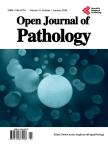Role of Selective Cyclo-Oxygenase-2 Inhibitor Celecoxib in Canine Osteosarcoma Cell Culture
选择性环氧化酶2抑制剂塞来昔布在犬骨肉瘤细胞培养中的作用作者机构:Laboratory of Investigative and Comparative PathologySchool of Veterinary Medicine and Animal ScienceUniversidade Estadual PaulistaBotucatuBrazil Department of PathologyPaulista School of MedicineFederal University of Sao PauloSao PauloBrazil Institute of Molecular Pathology and Immunology of University of PortoPortoPortugal Hemocentro Paulista School of MedicineFederal University of Sao PauloSao PauloBrazil Laboratory of Reproduction and Cellular TherapyDepartment of Animal Reproduction and Veterinary RadiologyUniversidade Estadual PaulistaBotucatuBrazil
出 版 物:《Open Journal of Pathology》 (病理学期刊(英文))
年 卷 期:2013年第3卷第4期
页 面:144-149页
学科分类:1002[医学-临床医学] 100214[医学-肿瘤学] 10[医学]
基 金:FAPESP(2009/53493-9)and(2009/53777-7)for the financial support
主 题:Canine Osteosarcoma Cyclo-Oxygenase-2 Celecoxib
摘 要:Background: Experimental studies have shown that cyclo-oxygenase-2 (Cox2) is related to the development and progression of tumors, since this enzyme is induced and expressed by cells such as macrophages, osteoblasts, “activated endothelial cells, and tumor cells. The activity in tumors includes proliferation, cell transformation, tumor growth, invasion and metastasis and may play an important role in carcinogenesis of the canine osteosarcoma, since it has high expression in tissue fragments. The combination of selective Cox2 inhibitors and other treatment modalities is the basis for a new anti-cancer therapy strategy. This in vitro study exposed primary cells of five different canine osteosarcoma cultures to selective Cox2 inhibitor at increasing concentrations and times. Results: For Cox2 negative cultures, despite the absence of differences, greater sensitivity of cells to treatment was observed. For Cox2 positive cultures, a higher number of necrotic cells were observed (P ≤ 0.05), when compared with negative cultures. For exposure times with Celecoxib doses, no difference (P 0.05) was found between the three times analyzed for living, apoptotic and apoptotic/necrotic cells. There are similarities in the values of 24 h and 48 h, with slight reduction of living cells, increasing those undergoing apoptosis and apoptosis/necrosis. There was significance for necrosis (P ≤ 0.05). In 72 hours, a significant difference was observed between the other two previous values (P ≤ 0.05). It was found for the group of 100 μML-1, that there was a numerically greater signaling for apoptosis and lower (P = 0.08) for necrosis, and this point was the onset of the pharmacodynamic phenomenon, with drop in the values for living cells and increased number of necrotic cells, with a tendency (P = 0.08) for reducing the percentage of necrotic cells for the group of 100 μML-1 when compared to that of 10 μML-1. Conclusions: For Cox2 positive and negative cultures, there was difference for



